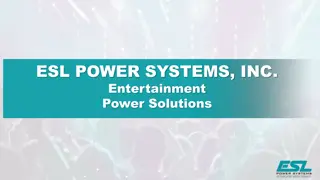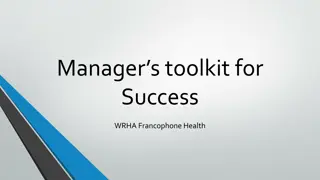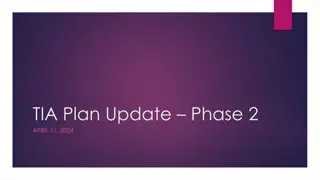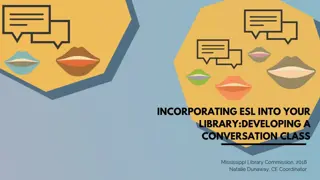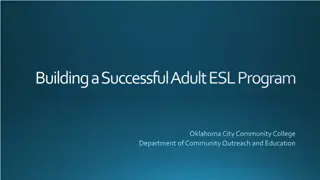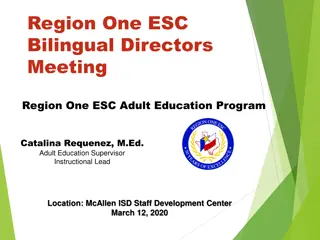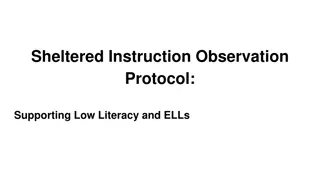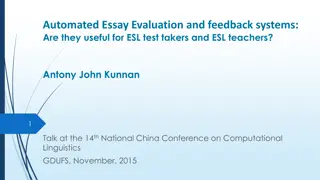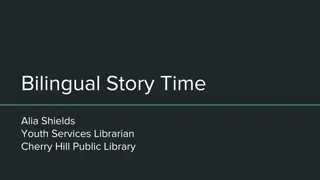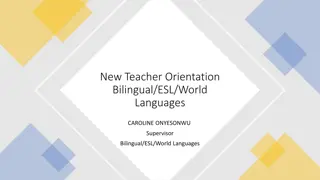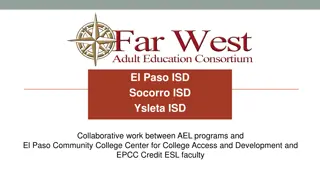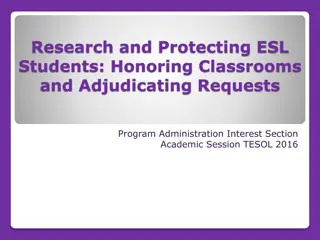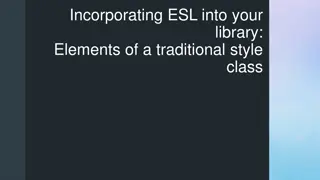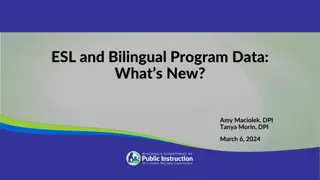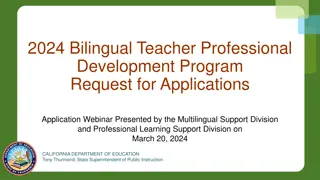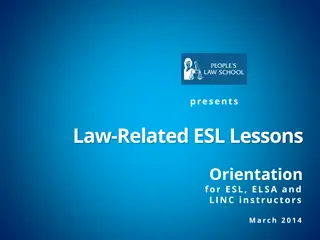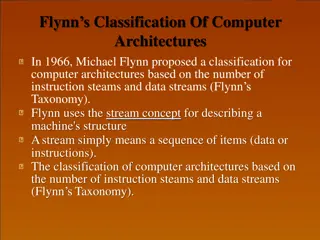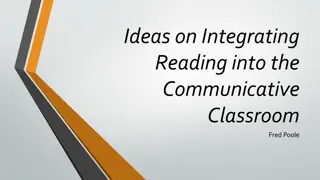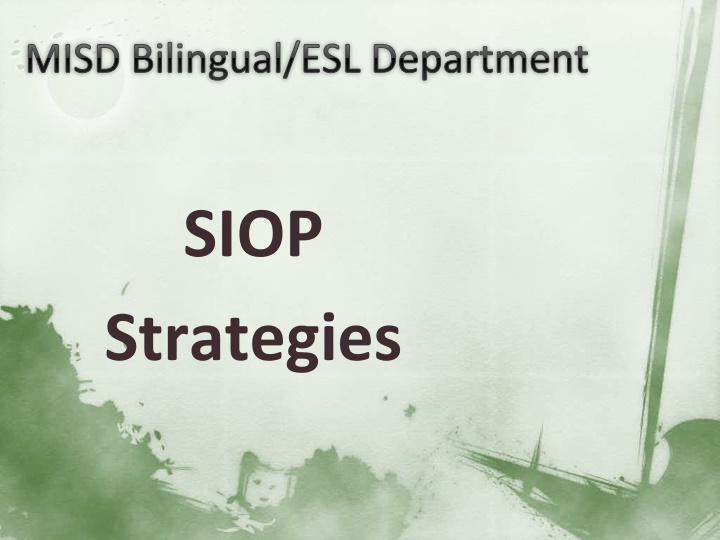
MISD Bilingual/ESL Department SIOP Strategies
In the MISD Bilingual/ESL Department, Sheltered Instruction Lesson Preparation focuses on Building Background Comprehensible Input to enhance student understanding and engagement. Language and Content Objectives, along with Vocabulary activities and visual aids, are employed to support student learning. Strategies such as explicit instruction, scaffolding, and metacognitive and cognitive strategies are emphasized to promote effective instruction and student development. Research confirms the importance of Learning Strategies in enhancing student comprehension, learning, and retention, supported by Metacognitive, Cognitive, and Social/Affective Strategies.
Download Presentation

Please find below an Image/Link to download the presentation.
The content on the website is provided AS IS for your information and personal use only. It may not be sold, licensed, or shared on other websites without obtaining consent from the author. If you encounter any issues during the download, it is possible that the publisher has removed the file from their server.
You are allowed to download the files provided on this website for personal or commercial use, subject to the condition that they are used lawfully. All files are the property of their respective owners.
The content on the website is provided AS IS for your information and personal use only. It may not be sold, licensed, or shared on other websites without obtaining consent from the author.
E N D
Presentation Transcript
MISD Bilingual/ESL Department SIOP Strategies
Review Provide one statement about the following: Sheltered Instruction Lesson Preparation Building Background Comprehensible Input
What have you been doing? Language Objectives on the board? Content Objectives on the board? Vocabulary activities? Pictures provided as visuals for vocabulary words?
Todays Content Objectives Select learning strategies appropriate to a lesson s objectives. Incorporate explicit instruction and student practice of metacognitive and cognitive strategies in lesson plans. Recognize the value of scaffolding instruction and identify techniques to scaffold for verbal, procedural, and instructional understanding.
Todays Language Objectives Identify language learning strategies to use with students. Discuss the importance of asking higher-order questions to students of all proficiency levels. Write a set of questions with increasing levels of difficulty on one topic.
Question? How do we teach students to access information in memory? How do we help students make connections between what they know and what they are learning? How do we assist students in problem solving? How do we promote retention of newly learned information?
Research Says Information is connected and retained in the brain through mental pathways that are linked to an individual s existing schema. Learning Strategies are special thoughts or behaviors that individuals use to help them comprehend, learn, or retain new information. Teaching students a variety self regulating strategies improves student learning and reading.
3 Strategies 1. Metacognitive Strategies 2. Cognitive Strategies 3. Social/Affective Strategies
Metacognitive Strategies Purposefully monitoring our thinking 1. Matching thinking and problem solving to learning situations 2. Clarifying purposes for learning 3. Monitoring one s own comprehension through self questioning 4. Taking corrective action if understanding fails
Cognitive Strategies Organized learning through self-regulated learning Directly related to individual learning tasks Used when learners physically and mentally manipulate material Used when students apply a specific technique to a learning task
Examples of Cognitive Strategies Previewing a story prior to reading Establishing a purpose for reading Consciously making connections between personal experiences and what is happening in the story Taking notes during a lecture Completing a graphic organizer Creating a semantic map
Social/Affective Strategies Social and affective influences on learning Examples When students interact with each other to clarify a confusing point Participation in group discussions or cooperative learning groups to solve a problem
Continuum of Strategies Teacher-Assisted Drill and practice Discovery Learning Brainstorming Discussion Teacher-Centered Lecture Direct Instruction Demonstration Recitation Peer-Assisted Role playing Peer tutoring Reciprocal teaching Cooperative learning
Student-Centered Strategies Rehearsal Strategies Organizational strategies Clustering Graphic organizers Outlining Repeated readings Selective underlining Two-column notes Elaboration Strategies Guided imagery Creating analogies Mental imagery
The Goal for Students To develop independence in self-monitoring and self-regulation through practice with peer- assisted and student-centered strategies
What goals do we have for our students? To use English in social settings To use English to achieve academically in all content areas To use English in socially and culturally appropriate ways
Suggested Behaviors for Teachers Focus on the big picture Build on what students already know and what is familiar Know how to fix it when comprehension is impeded Self-assess one s competence and knowledge Imitate the behaviors of native English speakers to complete tasks successfully Know when to use native language resources (human and material) to promote understanding
Mnemonics A memory system often involving visualization and/or acronyms. Order of planets My Very Easy Method: Just Set Up Nine Planets. Mercury, Venus, Earth, Mars, Jupiter, Saturn, Uranus, Neptune, Pluto Pi Mnemonics the number of letters in each word correspond to a digit. How I wish I could calculate pi.
SQP2RS An instructional framework for teaching content with expository texts, that includes steps. Surveying scanning the text to be read for 1 2 minutes. Questioning having students generate questions likely to be answered by reading the text, with teacher guidance Predicting stating 1 3 things students think they will learn based on the questions that were generated Reading searching for answers to questions and formulating new ones for the next section of text to be read. Responding Answer questions with partners/groups and formulate new questions for next section of reading Summarizing Orally or in writing summarizing the text s key concepts 1. 2. 3. 4. 5. 6.
GIST Summarization procedure assists students in getting the gist from extended text 1. Students and teacher read a section of text printed on a transparency After reading, assist students in underlining 10 or more words or concepts that are deemed most important List words on the board Together, write a summary statement or two using as many words as possible. Write a topic sentence to precede summary sentences. 2. 3. 4. 5.
Rehearsal Strategies Used when verbatim recall information is needed Visual aids (flash cards) Underlining Note-taking
Graphic Organizers Graphic representation of key concepts and vocabulary Teachers present as schematic diagrams Students use them to organize information Venn diagrams Timelines Flow charts Semantic maps
Comprehension Strategies Enhanced when teachers incorporate instruction that includes strategies Prediction, self-questioning, monitoring, determining importance, summarizing The more they are taught explicitly and practiced, the more likely students will use them.
Scaffolding Techniques From Vygotsky s Zone of Proximal Development ZPD is the difference between what a child can accomplish alone and what a child can accomplish with assistance of a more experienced individual. 2 types of scaffolding Verbal Scaffolding Procedural Scaffolding
Verbal Scaffolding Use of prompting, questioning, and elaboration to facilitate students movement to higher levels of language proficiency, comprehension, and thinking.
Verbal Scaffolding Examples Paraphrasing restating a students response in order to model correct English usage Using think-alouds carefully structured models of how effective strategy users think and monitor their understanding Reinforcing contextual definitions placing the definition of a word within the statement
Procedural Scaffolding 1. Explicit teaching, modeling, and practice opportunities with others, and expectations for independent application One-on-one teaching, coaching, modeling Small group instruction with children practicing new strategies with another experienced student Partnering or grouping students for activities with more experienced readings assisting those with less experience 2. 3. 4.
Scaffolding Model to Increase Independence Apply Practice Model Teach
Scaffolding Model to Increase Independence Independent Work Partners Small Group Whole Class
Questioning Ask questions that promote critical thinking Bloom s Taxonomy
B l o o m C i r l c e
Questions Special attention should be given to those at the top four levels of Bloom s Taxonomy Researchers have found that of approximately 80,000 questions the average teacher asks annually, 80 percent of them are at the knowledge level. Teachers are encouraged to assist students in becoming strategic when they teach them how to determine levels of questions they are asked.
Summary Just because they can t speak English proficiently doesn t mean they can t think! By conscientiously scaffolding support, and by thoughtfully asking questions that require students to interpret, apply, and synthesize, we increase the chances that English learners will become critical thinkers.
Homework Assignment Work on integrating SIOP strategies into your lesson plans and document your successes and challenges. Bring one student sample created/completed using a SIOP strategy First fifteen minutes of our next meeting will be devoted to sharing with the class. Email us any time if you need additional support Tina Kelman tkelman@mckinneyisd.net Sonia Rhykerd srhykerd@mckinneyisd.net


